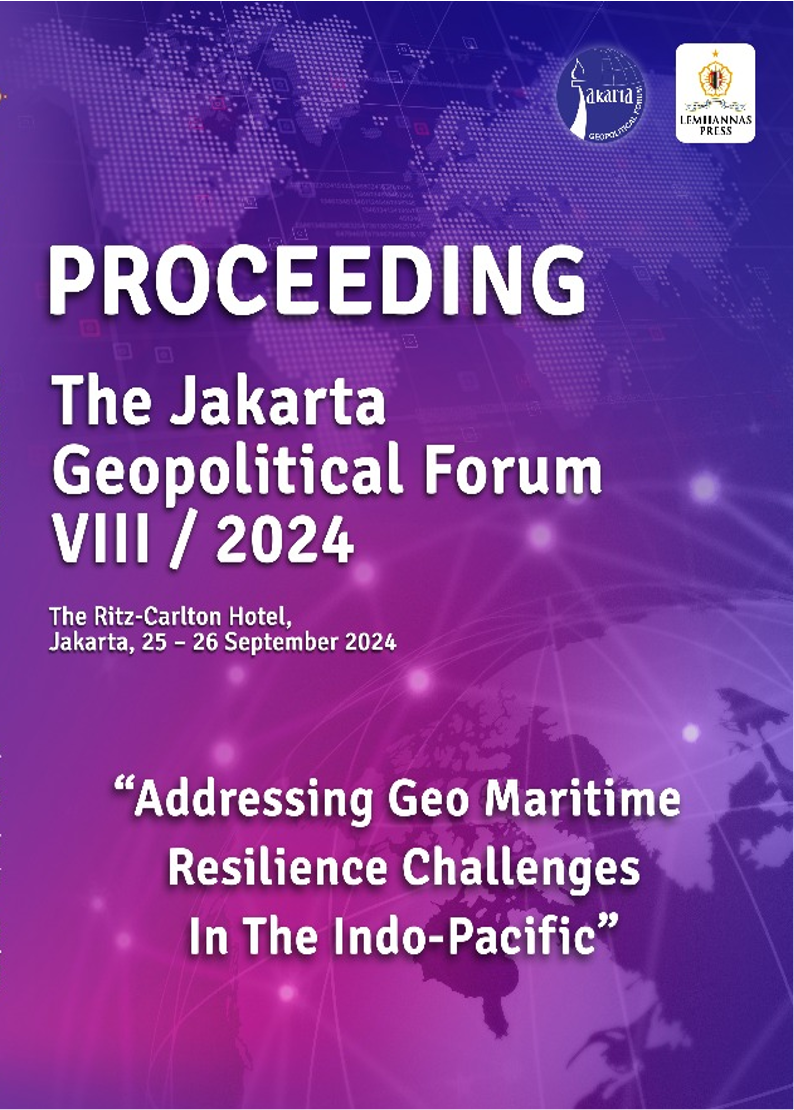INDIA–INDONESIA MARITIME CONVERGENCE IN THE INDO-PACIFIC: STRATEGIC COOPERATION, REGIONAL SECURITY, AND THE RULES-BASED ORDER
DOI:
https://doi.org/10.55960/jgf.v8i1.277Keywords:
Indo-Pacific, maritime security, multilateral cooperation, regional security, rules-based orderAbstract
Abstract.
The paper examines the strategic convergence between India and Indonesia in shaping the evolving maritime order in the Indo-Pacific. As two key littoral states with shared historical, geopolitical, and geoeconomic interests, their partnership remains central to maintaining regional stability amidst intensifying great power competition, asymmetric threats, and challenges to international law in contested maritime zones. Using qualitative content analysis of policy documents, regional frameworks, and scholarly literature, the study analyses how India’s maritime posture, through mechanisms including the Indo-Pacific Oceans Initiative, the Indian Ocean Rim Association, BIMSTEC, and the Quad, reinforces its commitment to a free, open, and inclusive Indo-Pacific anchored in the United Nations Convention on the Law of the Sea. The analysis incorporates empirical developments involving global energy and supply chain disruptions, conflict spillovers from Europe and West Asia, and the growing use of maritime technologies in hybrid warfare. The study situates these developments within a theoretical framework that regards maritime domains as shared spaces requiring collective governance. The findings highlight the significance of multilateral cooperation, trust-building, and strategic self-reliance, particularly through India–Indonesia collaboration, to uphold a rules-based maritime order and secure the Indo-Pacific’s future.
Downloads
References
1. Chakravorty S. Jakarta Geopolitical Forum VIII/2024. 2024 [cited 2025 Aug 1]. India’s Maritime Strategy and Interests in Indo-Pacific. Available from: ttps://www.youtube.com/watch?v=gZZbI7yOXno
2. Hakata K, Cannon BJ. The Indo-Pacific as an Emerging Geography of Strategies. In: Indo-Pacific Strategies [Internet]. Routledge; 2022. p. 3–21. Available from: https://www.taylorfrancis.com/chapters/edit/10.4324/9781003206934-1/indo-pacific-emerging-geography-strategies-kei-hakata-brendon-cannon
3. Aoudé IG. The Axis of Resistance and Imperialism in West Asia. Arab Stud Q [Internet]. 2022 Aug 3;44(3/4):154–80. Available from: https://www.jstor.org/stable/48696274
4. Jin Y, Feng Y. Asia-Pacific maritime security cooperation: Challenges and opportunities. Mar Policy [Internet]. 2024;160:105942. Available from: https://www.sciencedirect.com/science/article/pii/S0308597X2300475X
5. Doyle T, Rumley D. The Rise and Return of The Indo-Pacific. Oxford: Oxford University Press; 2019. 211 p.
6. Policinski E, Kuzmanovic J. Protracted Conflicts: The Enduring Legacy of Endless War. Int Rev Red Cross. 2020/10/12. 2019;101(912):965–76.
7. Sosnowski M, Petrossian G, Nunphong T, Piza E. Crimes at Sea: Exploring The Nexus of Maritime Crimes across Global EEZs. Mar Policy. 2024;166:106161.
8. Krippendorff K. Content Analysis: An Introduction to Its Methodology [Internet]. SAGE Publications; 2018. 472 p. Available from: https://methods.sagepub.com/book/mono/content-analysis-4e/toc
Downloads
Published
Conference Proceedings Volume
Section
License
Copyright (c) 2024 Author's

This work is licensed under a Creative Commons Attribution-ShareAlike 4.0 International License.











